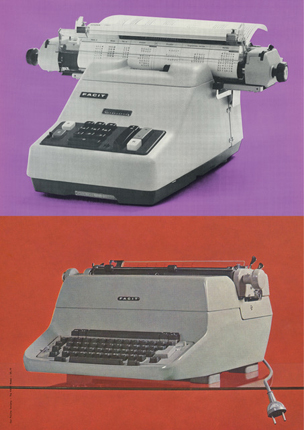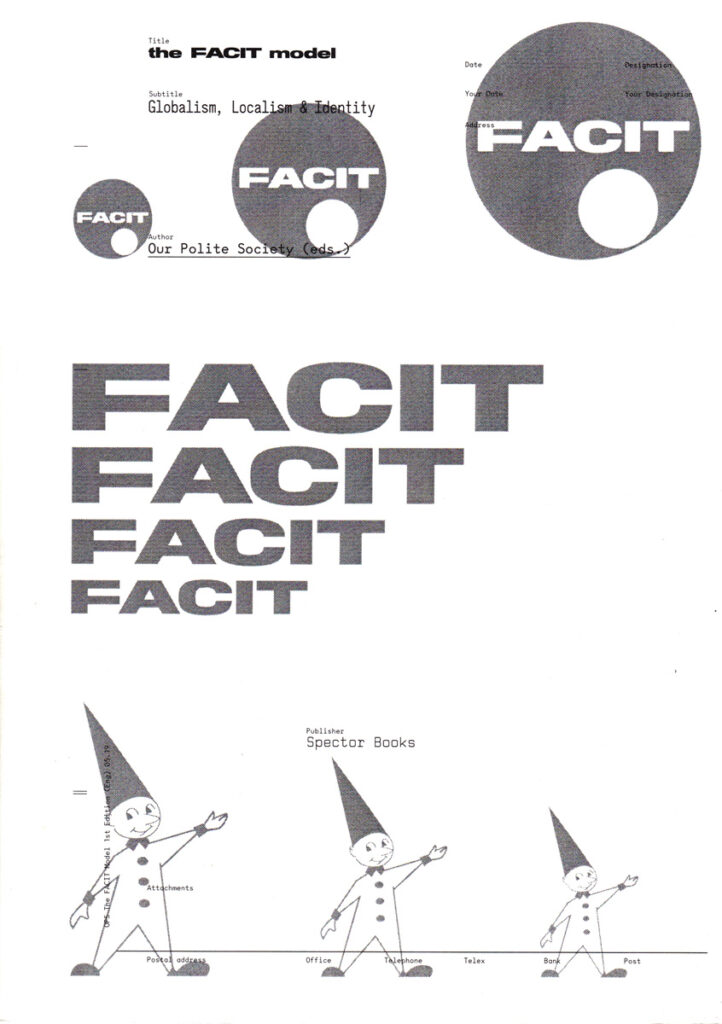THE FACIT MODEL by Our Polite Society
with a talk by Matthias Kreutzer and Jens Schildt at 8.30pm
Thursday May 9, 8pm
“FACIT (FACIT AB) was an industrial corporation and manufacturer of office products including furniture. It was based in Åtvidaberg, Sweden, and founded in 1922 as AB Åtvidabergs Industrier. FACIT AB, a manufacturer of mechanical calculators, was incorporated into the corporation the same year. In 1932, the first ten-digit calculator was manufactured by Åtvidaberg Industries, it was named FACIT and became a great success.” (Wikipedia)
In Sweden, much has been written about the rise and fall of FACIT, one of the world’s biggest office machine companies that disappeared into obscurity almost overnight because of missed technological developments and fierce competition. ‘The FACIT Model’ approaches this story from a design perspective through the abundance of printed matter that is still preserved in the company archive. Modernist vision manifests itself in the formal qualities of the company’s printed output, but also in their belief in a ‘total design’ which included tools, working environments, and social structures.
Our Polite Society approached the FACIT AB archive as a visual source, studied type specimens to make new digital interpretations of alphabets used in FACIT machines, spoke to former FACIT employees to learn more about their ideas and intentions, and commissioned a number of contributions to deal with topics that they found significant in relation to the material. Mark Owens looks at FACIT in the broader context of modernism and corporate culture; Gabriel .A. Maher & Isabel Mager deconstruct the gendered depiction of the secretary in FACIT catalogues; Paul Gangloff writes about the production of words with typewriter technology.
The 1950s –1970s were the heyday of corporate design- and office-culture – years in which many of today’s codes and forms of working & living were conceived and defined. ‘The FACIT Model’ gives testimony to the history of a company which grew from a small family business into a global manufacturer of calculators, typewriters, and office furniture. At the core of the relationship between the company and the community is the ethos of ‘good design’. For decades, the company and its vision indeed dominated and shaped the (social) life in the small municipality of Åtvidaberg. ‘The FACIT’ Model documents this intertwining of modernism, corporate culture, and society. By lifting the printed ephemera from the alleged objectivity of the archive, the material is reactivated – both to testify to its past and to reflect on lingering questions of localism, globalism, and identity.

